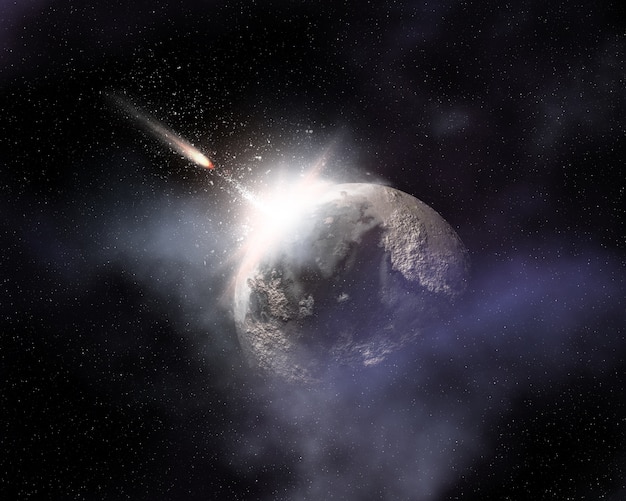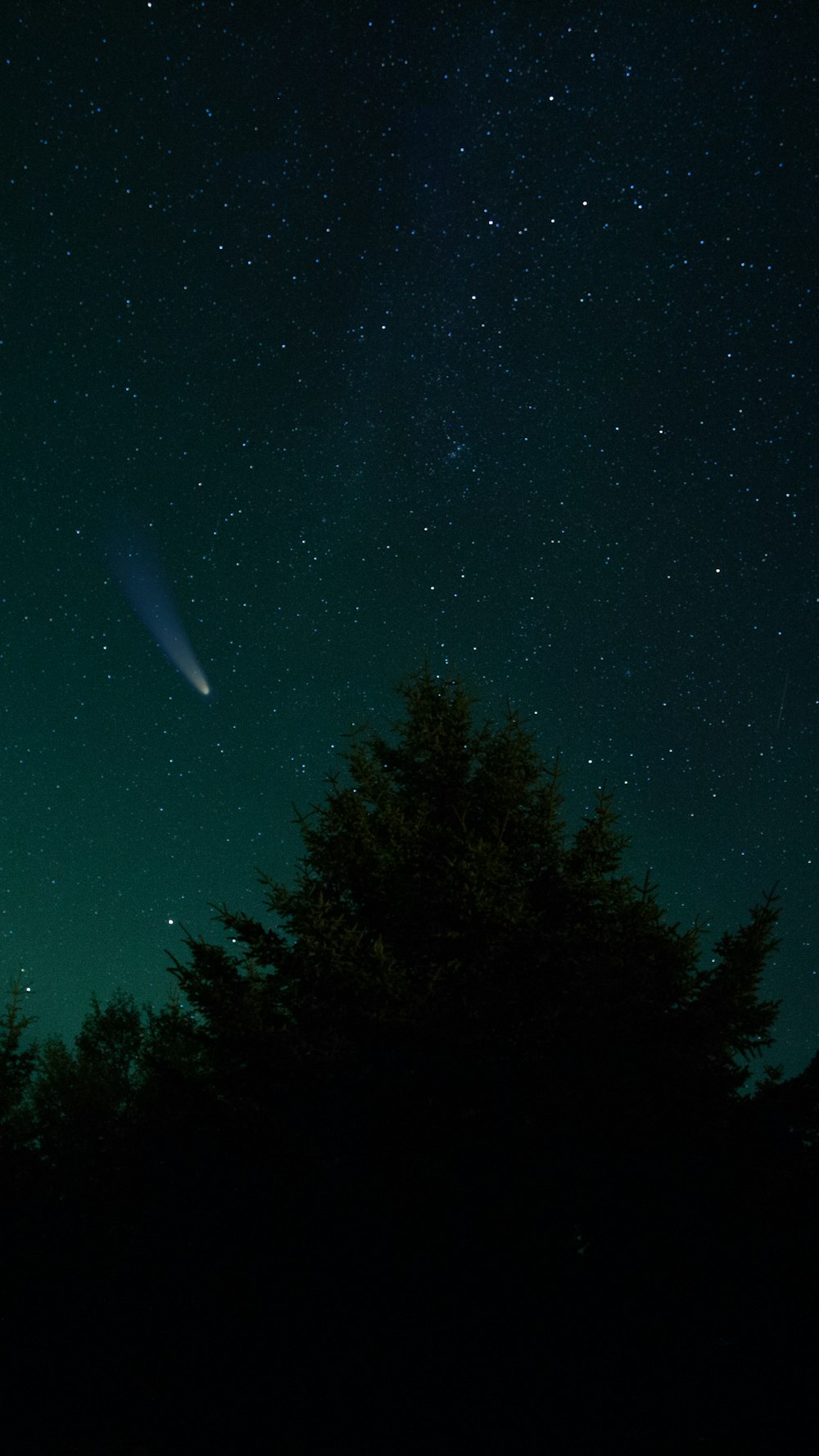
Comets overview
Space experts think comets are leftovers from the material that at first shaped the planetary system. This happened nearly 4.6 billion years prior. Comets are frigid icy bodies in space that give away gas or residue. They are regularly contrasted with grimy snowballs. However, the late examination has driven a few researchers to call them snowy dirtballs. Comets contain dust, ice, carbon dioxide, alkali, methane, etc. They range from a couple of miles to many miles wide, yet as they circle nearer to the sun, they heat up and discharge gases and residue into a bright head that can be bigger than a planet. This structures a tail that extends a huge number of miles.

Source: freepik
Formation of Comets:
Astrophysicists accept comets appeared from the dust and gas of the protoplanetary circle, a doughnut formed haze of waste/debris encompassing our young star. On the edges of the plate, a long way from the sun’s warmth, fine grains of residue covered with frozen gases and water ice started amassing together. Over the long haul, bunches of residue collected into ice-rich rocks, which later advanced into the mile-sized bodies that we notice today going among and a long ways past the planets.
Comet consists of:

Source: Unsplash
Researchers have recognized three primary parts of a comet: the nucleus, the coma, and the tail. The tail area has three sections — the ion tail, the dust/residue tail, and the envelope tail. A few comets, when joined with their tails, can be bigger than the separation from the Earth to the sun (93 million miles).
Comprised of ice, gas, rock, and residue – the nucleus of a comet locating in the focal point of the head. It remains constantly frozen. The nuclei are probably the most nebulous particle in space.
The coma of the comet is mostly comprising of gas that surrounds the nucleus. It has a diameter of around 600,000 miles. The coma consists of carbon dioxide, hydrogen, ashes, water vapor, and neutral gases. The coma, along with the nucleus, makes up the comet’s head.
The ion/plasma tail comprises charged particles that reliably face away from the sun. They move away because of sun-powered winds. The dust tail is long and wide. It contains tiny residue particles. The envelope tail consists of hydrogen gas. It is normal location is in between the residue tail and particle tail.
What is the size of the Comet?
Comets are exceptionally little in size comparative with planets. Their normal diameters generally range from 750 meters (2,460 feet) or less to about 20 kilometers (12 miles). As of late, the proof has been observed for a lot bigger far-off comets, maybe having diameters across 300 kilometers (186 miles) or more, yet these sizes are still small in comparison with planets.

Source: Pixabay
Where Do Comets Come From?
Comets have two origins. The Oort Cloud is where long-period comets (those that take more than 200 years to complete an orbit around the Sun) are born. The Kuiper Belt is where short-period comets (those that take fewer than 200 years to complete an orbit around the Sun) are born.
When comets collide with Earth, they have a significant effect. Although comet-Earth collisions are incredibly rare today, they were more common millions of years ago. Some scientists believe that early in Earth’s history, colliding comets supplied much of the planet’s water. Some scientists believe that comets could have delivered organic molecules that were essential for the creation of life.
How Comets Get Their Names?
Comet naming sometimes is confusing. Comets are by and large named for their discoverer( either an individual or a spacecraft). This International Astronomical Union rule is effective since the last century.
For instance, Comet Halley shares its name with Edmund Halley. He confirmed that Comets witnessed in 1531, 1607, and 1682 implied to be single comets and had the same orbits. As indicated by Edmund Halley’s computations, in 1758 he anticipated accurately the comet’s return yet tragically, he did not live to see Halley Comet.
Once in a while, it is seen that more than one individual reports a comet simultaneously. For this situation, the names of comets can be consolidated like Comet Hale-Bopp or Comet Shoemaker. Comet Shoemaker-Levy 9 was so named in light of the fact that it was the 10th short-occasional comet found by Eugene and Carolyn Shoemaker and David Levy.
Since shuttle is exceptionally compelling at spotting comets numerous comets have LINEAR, SOHO, or WISE in their names.

Source: Pixabay
Conclusion
Halley’s Comet is the most well-known comet. It’s a “periodic” comet that comes close to Earth once in 75 years, allowing a person to see it twice in his or her lifetime. Last seen here in 1986, and it is scheduled to return in 2061. Many people consider Comet Donati to be the most stunning comet ever seen. It left an indelible mark on the art world, with countless works depicting it in all its glory.
Comets, with their brilliant glowing coma and long dust and ion tails, are among the most beautiful objects in the sky. Comets are a spectacular and ever-changing view for months as they orbit the Sun in extremely irregular orbits.





